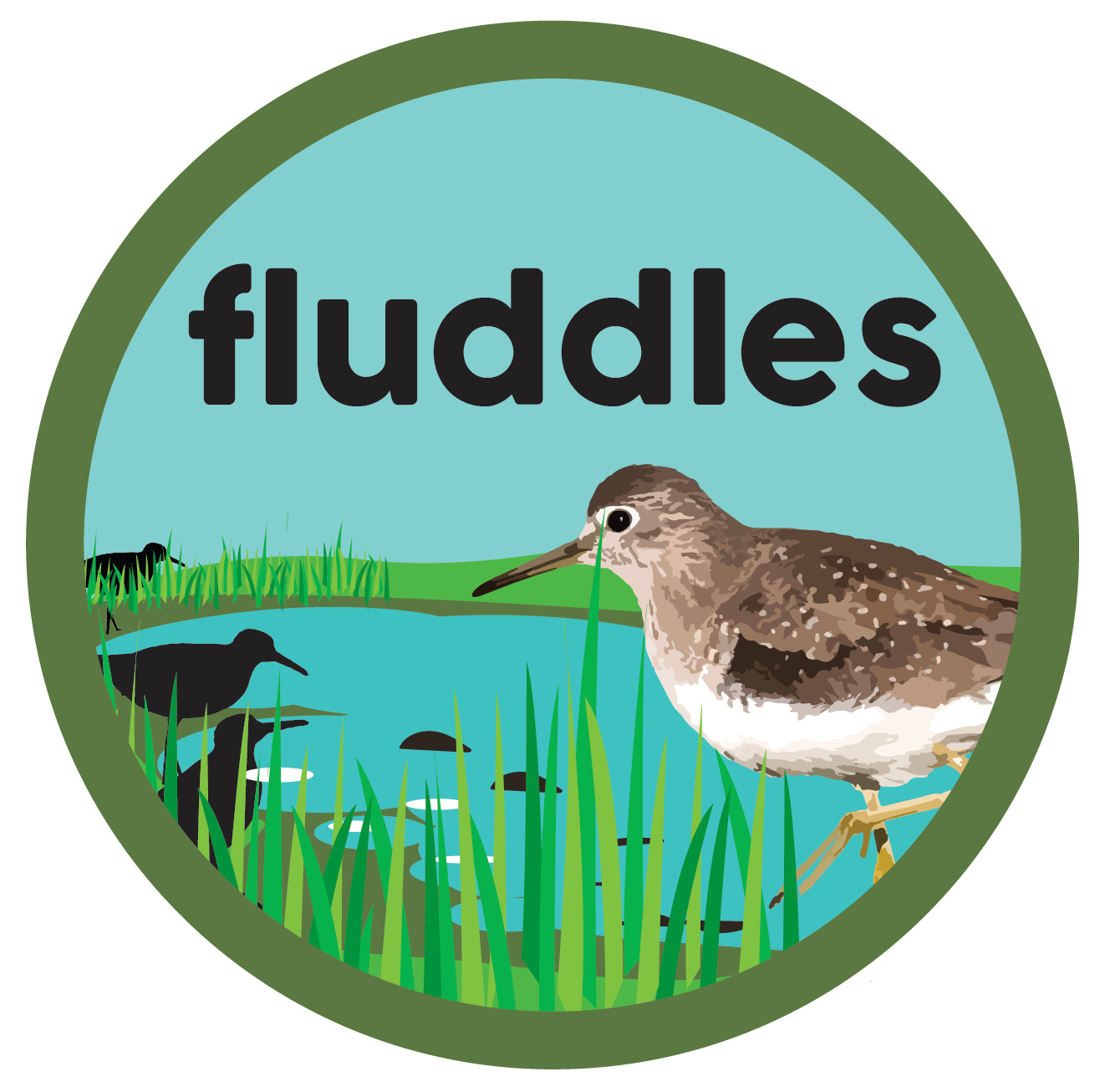'Birdwatchers and shorebirds both dream of fluddles'
Another look at intermittent wetlands and the lives of shorebirds
There’s something vulnerable about shorebirds like sandpipers and plovers. They spend vast portions of their lives on the wing. Weighing in at just a few ounces, they need to forage almost constantly to stay nourished and make it through migration. That's true throughout their range, including when they arrive here on the beaches of Chicago or the mudflats and fluddles of central Illinois.
I'll let Bill Davison of Easy By Nature, a frequent TWiB contributor, take it from here:
At this point in their journey, they are likely starving. They have used up their fat reserves and cannibalized their internal organs to produce enough energy to sustain themselves. When they land, they need to find high-quality habitat where they can forage for abundant food without being disturbed. The abundance and nutritional quality of their food are essential factors that determine if they will be able to put on enough fat to complete their migration to their nesting grounds in northern Canada and Alaska. They are in a race against time, and they are in a hurry to get to their breeding grounds in time to synchronize their nesting cycle with peak insect activity so they have enough food to feed their young.
It’s not just their diet and migration that make them vulnerable, it’s also the very nature of their stopover sites. Wetlands like fluddles are fleeting, dependent on precipitation (just check out Friday’s video post). Throw in the vicissitudes of modern humanity, specifically monoculture farming practices, and the situation is is even more threatening. Writes Bill:
The entire landscape used to welcome shorebirds, and it provided abundant food for hundreds of thousands of years. But, over the past 300 years, we have recklessly remade the landscape to suit our purposes, and we have left very little habitat for wildlife.
I met Bill and others in McLean County almost exactly a year ago, when a fluddles project between John Wesley Powell Audubon Society and the Geography Department at Illinois State University came to my attention. That’s when I found out about their effort to identify and map 8,000 (!) wetlands in the county. I found kindred spirits in these fellow fluddle enthusiasts, who appreciate birds and this subtle topographic feature. (I’ll be back in Normal tomorrow for a screening of THE MAGIC STUMP.)
Illinois State University has written a great piece about fluddles, “Farmers, migratory birds find harmony in modern wetland conservation,” featuring ISU Geography Professor Dr. RJ Rowley and student researcher Brittany Menzel:
Rowley used LiDAR (light detection and ranging) technology to gather data that depicts elevation and identifies land depressions. Similar to radar detection, but rather than using radio waves, LiDAR uses a laser. Simply put, it can measure the shape of the Earth and the characteristics of its surface.
“Brittany and I were the map nerds,” Rowley said. “We brought the mapping technology to the project. We developed an algorithm to identify depressions across the county that are lower than the surrounding areas.”
The project partners have since narrowed the focus to 130 wetlands that will be monitored this spring by the local birding community, starting in April. Partners like Ducks Unlimited, The Wetlands Initiative, and U.S. Fish and Wildlife Service are working with land owners to share options for preserving fluddles—options that include sources of conservation funding.
We capture some aspects of this in the FLUDDLES film trailer, and hope you’ll contribute to the project here. It started with a chance encounter, but your support helps raise awareness and give shorebirds—and fluddles—a fighting chance in the future.
Support FLUDDLES and we’ll send you a sticker!
Thanks to artist Pam Sloan, these beautiful stickers are now available when you make a contribution of $10 or more to the FLUDDLES film project. The 4” by 4” sticker depicts a Solitary Sandpiper, a regular migrant through the Midwest, as it stands beside a flooded field. Your contribution will go toward a match we are seeking from Illinois Arts Council to complete the film by this fall. Thank you for making this independent documentary film project possible!
Starved Rock redux
I was a guest at the Prairie State Conservation Coalition conference at Starved Rock State Park last week and enjoyed learning about the land trust movement in Illinois. There were an array of presentations on topics ranging from Illinois nature preserves to invasive species research and prescribed burns.
I had Emily Torem's piece in mind about the birds of Starved Rock. I didn’t see any of the big ticket species, like Bald Eagles, but I did hear a Tufted Titmouse singing and a Barred Owl calling near French Canyon.
TWiB Notes
One Earth Film Festival has some great films coming up in the Chicago area, including “The Falconer,” a documentary feature that follows master falconer Rodney Stotts on his mission to build a bird sanctuary and provide access to nature for his stressed community. Stotts will join the in-person watch party at North Park Village Nature Center on March 10 at 6:30 p.m……Birdcast is live again for migration season and displaying the mass movements of birds as detected by weather radar. It's a nifty tool, and one to check as the first warm fronts of spring move through…..Short-range migrants returned in force last week, including species like American Woodcock, Brown-headed Cowbird, Common Grackle, and Red-winged Blackbird. I had a Song Sparrow singing on Saturday, and others have already found Eastern Phoebe, Eastern Meadowlark, and Yellow-bellied Sapsucker.
Thanks for reading these newsletters every week! If you enjoy these posts, please consider taking out a paid subscription to support my work. Click the button below to get started.
If you liked this post, you also may like…







